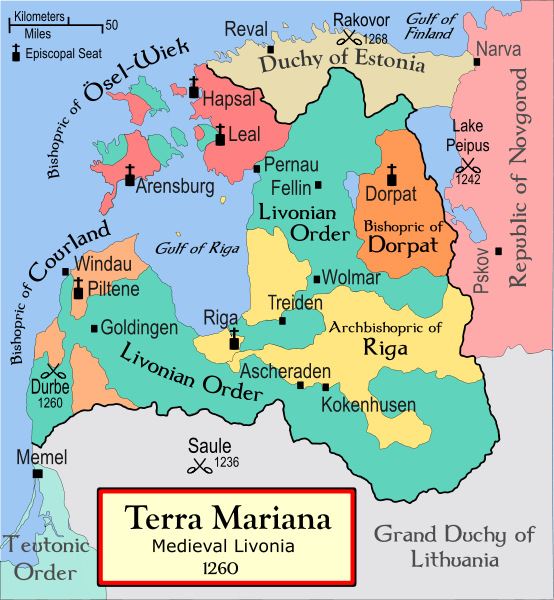Middle Ages
|
After baptism in ancient Estonia, the Ugandi county became the core area of the Tartu Diocese and most of the territory of the Sakala county was beseiged by the Livonian Order. The new rulers let the new stone fortresses and churches built to fortify and reinforce their secular and religious powers. The ruins in Karksi, Helme, Rõngu and Vastseliina are the landmarks of that period. Instead of being the masters of their land, the native Estonians were turned into taxpayers on their own land. The main tax payments were tithe, hinnus and corvee. Still, the peasants kept their personal freedom. After the St George`s Day Uprising the peasants were widely punished by feudal lords, there was much lawlessness in increasing the taxes (corvee, monetary rent), and step by step serfdom with practically no personal freedom and legal rights was forced on the Estonian peasants (ploughmen, yeomen, freelanders). On the other hand, the Middle Ages involved Estonia to the Western hemisphere - culturally and economically. At that time the West European legislation and ownership principles were followed in Estonia, and from Europe new building materials and methods were introduced. A number of loans from the Lower German languagecame to the Estonian language, e.g. „köök", „haamer", etc. Several Estonian cities, as Tartu and Viljandi from South Estonia, were the members of the Hanseatic League, having the respectable international trade contacts. Valga as the „geographical centre" of the Old Livonia was the rulers` meeting place on the highest representative level - the general diets (Landtage) were held there since 1421.
In the course of time, the native Estonians accepted the
Christian religion with the new saints and traditions, still mixing them with
their earlier customs, e.g. St. George`s Day, St John`s Day, St Michael`s Day.
Towards the end of the 15th century Christian names were started to adapt and
use, e.g. Andres, Jaan, Jüri, Laur, Mihkel, Kadi, etc. The population in Estonia in the mid 16th century had grown to 250,000 - 280,000 people, including German and coastal Swedish settlers. |
|
|
|
